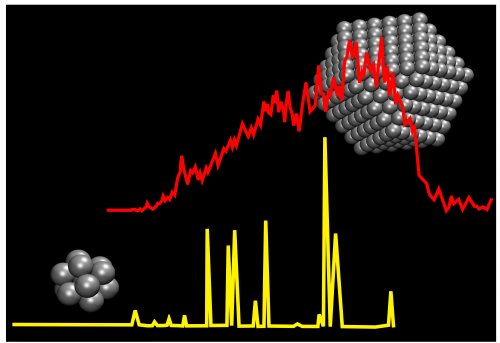Heterogeneous catalysts play an important role in the global economy and they are used in practically every industrial process today. Many such catalysts consist of precious metals in the shape of particles ranging in size from microns down to the nanometer scale. The major part of these particles is completely inactive, since it is not exposed to the reactant. That means that a significant amount of the metal component is wasted. Additionally, as the size is reduced, the intrinsic catalytic properties of the material change due to a combination of localized coordination effects, changes in surface site distribution, surface relaxation, and quantum size effects. However, even the most careful experimental measurements have difficulty in disentangling these effects, and so in spite of the profound influence that these changes can have on the catalytic properties, our understanding of these effects is still elusive.
In this study, we have performed extensive density functional calculations of adsorption energies of oxygen on gold and platinum clusters with up to 923 atoms (3 nm diameter). One of our conclusions is that the bonding of adsorbates compared to the bonding on extended surfaces is weakened mainly due to the surface tension induced by an overall cluster compression. Quantum-size-effects also influence adsorption energies but only below a critical size of 1.5 nm for platinum and 2.5 nm for gold. The model we have developed describes the strain-induced size effects on adsorption energies and it incorporates the influence of surface structure, type of adsorbate, the metal, and the surface coverage.
Modeling surface tension effects for metal clusters
September 17, 2015
Research Areas:

